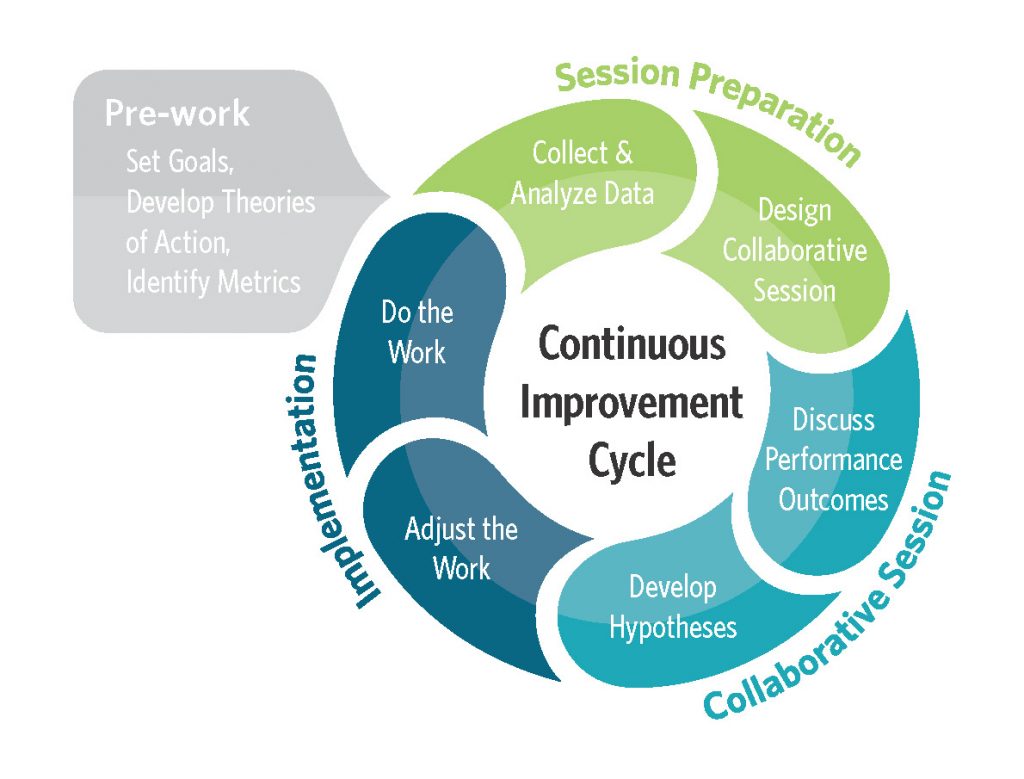 As states receiving Preschool Development Grant (PDG B-5) funds from the US Department of Health & Human Services (HHS) complete their needs assessments and strategic plans, they should already be thinking about implementation. Proposals for additional funding, due to HHS this fall, will focus on putting the ambitious strategic plans into action, which we know is no simple feat. No strategic plan can perfectly predict and map the future. A lot will be discovered in the early implementation that necessitates course corrections and refinement of the work. Furthermore, it will take the commitment and support of stakeholders on the ground to ensure a successful implementation of the state’s strategies, and those folks need a clear channel of communication with the state to ensure that all parties are on the same page and utilizing best known practices. This is a lot for states to balance, but we have seen the successful use of continuous improvement frameworks to achieve success with multi-party initiatives.
As states receiving Preschool Development Grant (PDG B-5) funds from the US Department of Health & Human Services (HHS) complete their needs assessments and strategic plans, they should already be thinking about implementation. Proposals for additional funding, due to HHS this fall, will focus on putting the ambitious strategic plans into action, which we know is no simple feat. No strategic plan can perfectly predict and map the future. A lot will be discovered in the early implementation that necessitates course corrections and refinement of the work. Furthermore, it will take the commitment and support of stakeholders on the ground to ensure a successful implementation of the state’s strategies, and those folks need a clear channel of communication with the state to ensure that all parties are on the same page and utilizing best known practices. This is a lot for states to balance, but we have seen the successful use of continuous improvement frameworks to achieve success with multi-party initiatives.
How might a state effectively use continuous improvement to manage their strategic plan? We think a three-pronged approach is best.
- Set up a performance management process to manage the implementation of the strategic plan. The design (sometimes called continuous improvement) is simple in concept, but it requires structure and dedication. Essentially it is short cycles of planning specific actions based on the strategic plan, doing those actions with fidelity, studying the short-term results using available data (including proxy data), and purposefully acting on this information by adapting strategies and tactics based on these data. Then the cycle repeats, usually until the outcome is achieved. Establishing these performance management cycles requires planning, change management, and commitment to the process.
- Establish networked improvement communities of practice. Improving outcomes for our youngest residents and their families requires more than just the state. Because most of the service delivery is happening among county and local stakeholders, they need to be a part of the implementation conversation to ensure success. Structured and facilitated networks that allow groups of regional stakeholders and the state to share and learn from one another during implementation will improve outcomes and allow the state to more quickly scale those practices that are proving to be most impactful.
- Create a solid technical assistance system designed for implementation support. While a strong network can provide great support across typically disparate systems of early care and learning providers, the county and local stakeholders will also need solid technical assistance to lighten the workload of implementation. The skill set for change management and short-cycle performance management not necessarily abundant nor evenly distributed across your state. Technical assistance could include support in developing local-level strategic plans which are based on the desired outcomes and strategies laid out in the state’s plan, templates and tools to support implementation work, one-on-one thought partnership sessions to work through issues specific to region, webinars to share best practices, and the like. A clearly defined and prominent effort to provide these supports at the right levels to the right people can greatly tip the scale toward success.

Leave a Reply
The comments are closed.